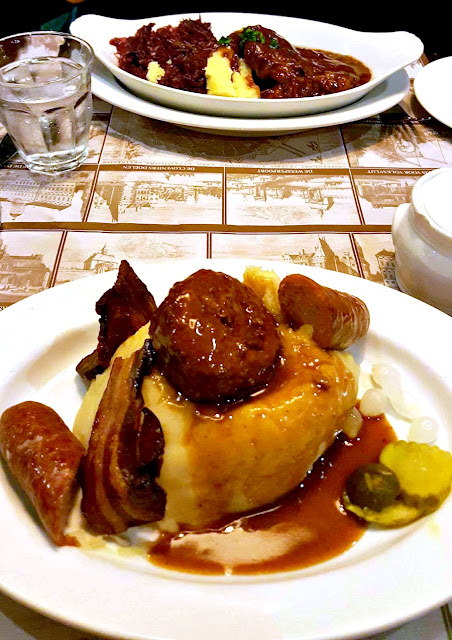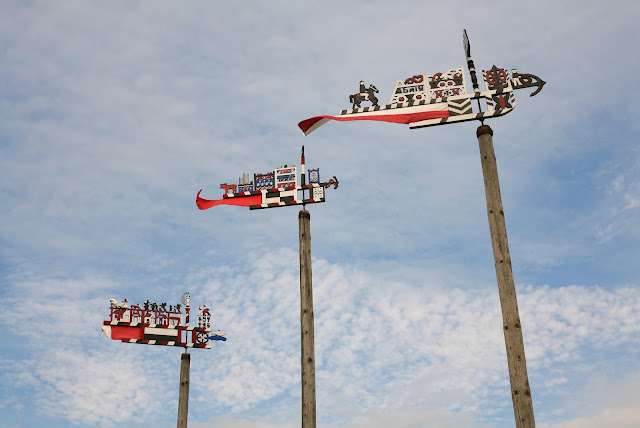The diversity of this city is a wonder to witness; it's the type of place that sitting back and people watching can show you the extremes this town has to offer. Even though I've been here before, it's still an eye-opener for me. Your belief that you know what to expect in the redlight district is tested indeed; I now know more than before just by window shopping!
Decided to try some local fare in our area of Amsterdam. We were recommended to try Haesje Claes Restaurant that had Dutch cuisine, and we tried dishes that are local to the area. Trying the local cuisine is a way to understand the culture of the city. While Amsterdam itself is diverse, the traditional Dutch food is something I'm sure with which they can all agree.
Having extra days in Amsterdam, we took a tour of the Windmills and local fishing towns. Although it felt like cattle driven through a tourist town, we did get to see some beautiful running windmills, a picturesque fishing village and how to make cheese & clogs. If you can bypass the herding through tourist stores, you can still appreciate the local producers that make a living with the windmills, the cheese & the clogs. Included is cheese tasting with many flavours, also a stop to explain a brief history of the Netherlands.
With the end of the cruise, and our time in Amsterdam we headed back to Rome to catch our flight back home. I enjoyed the trip, the slow, lazy way through Italy, the delightful places we stayed at, and the luxury cruise through the Baltic Sea. Another number of ticks off my wish list.






















